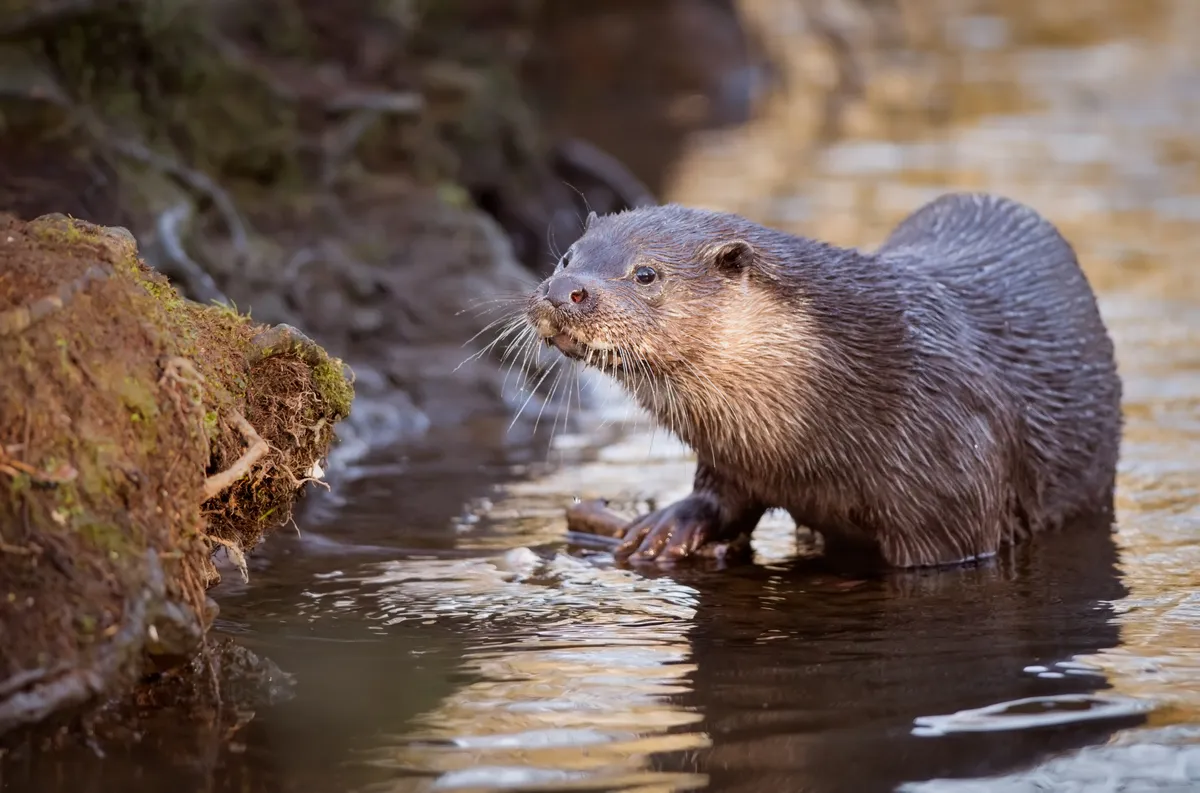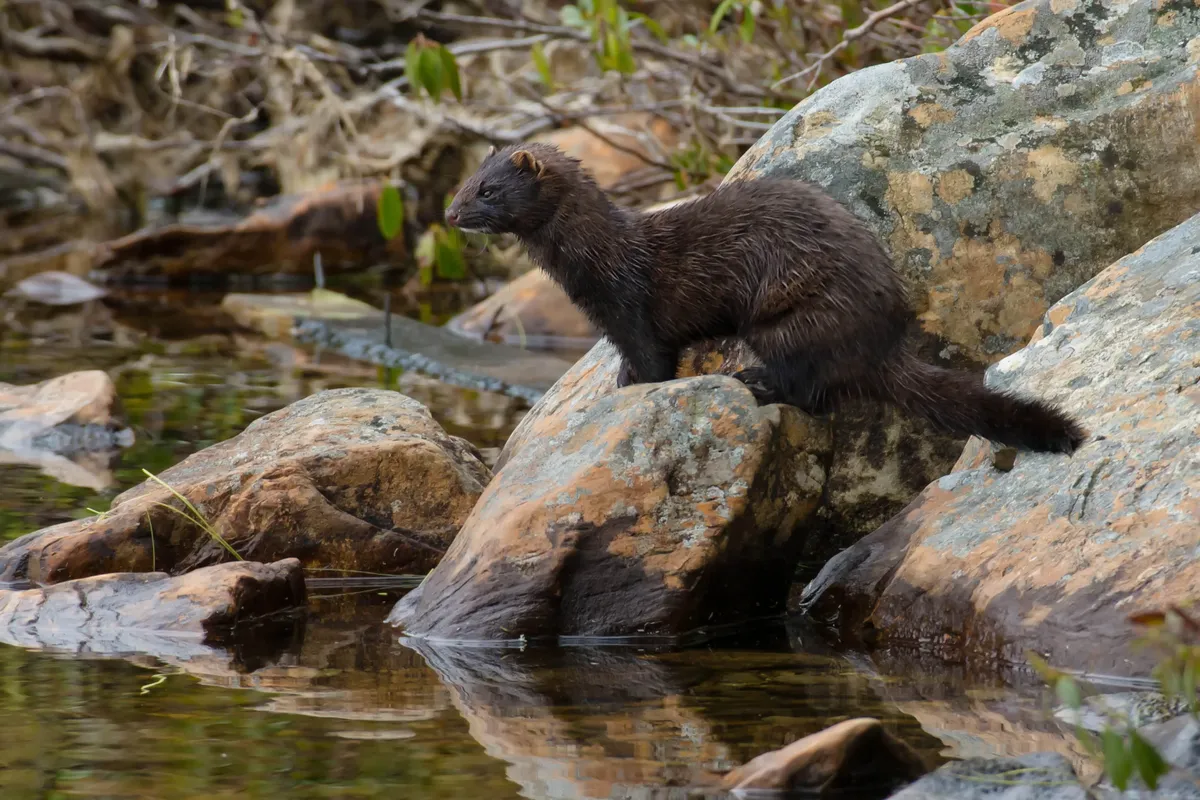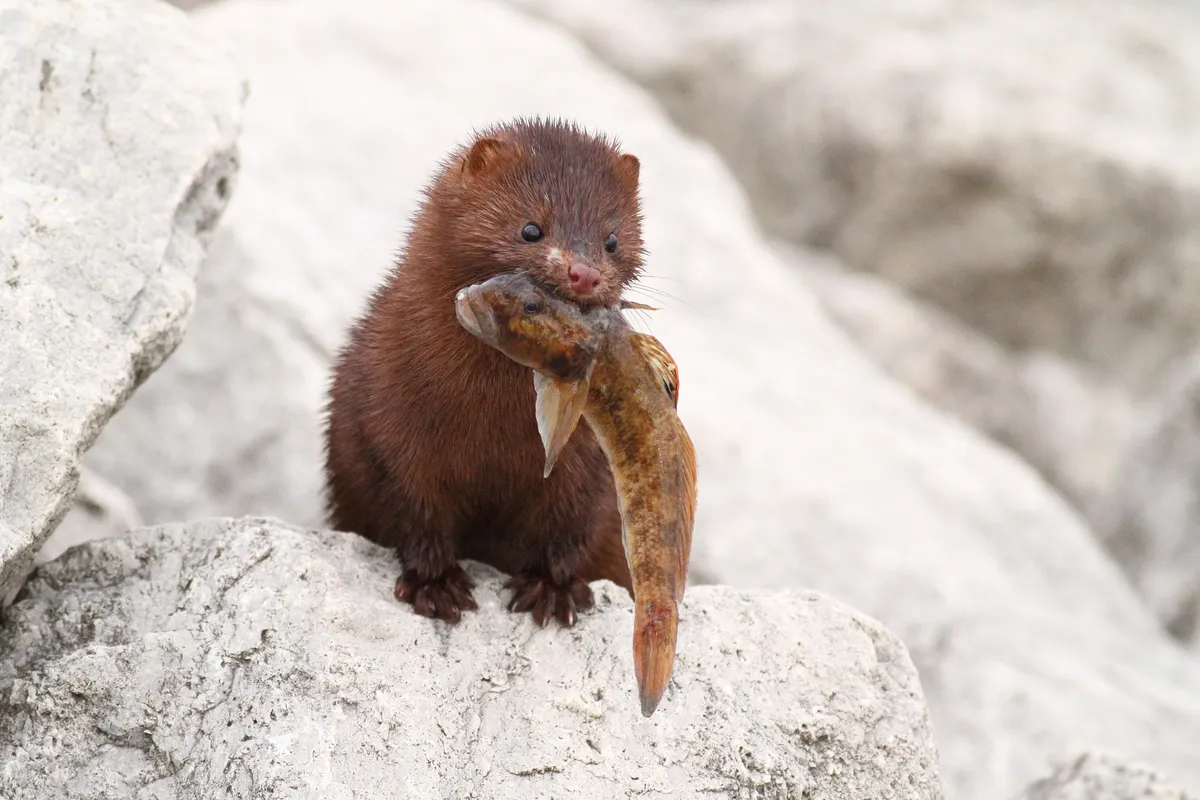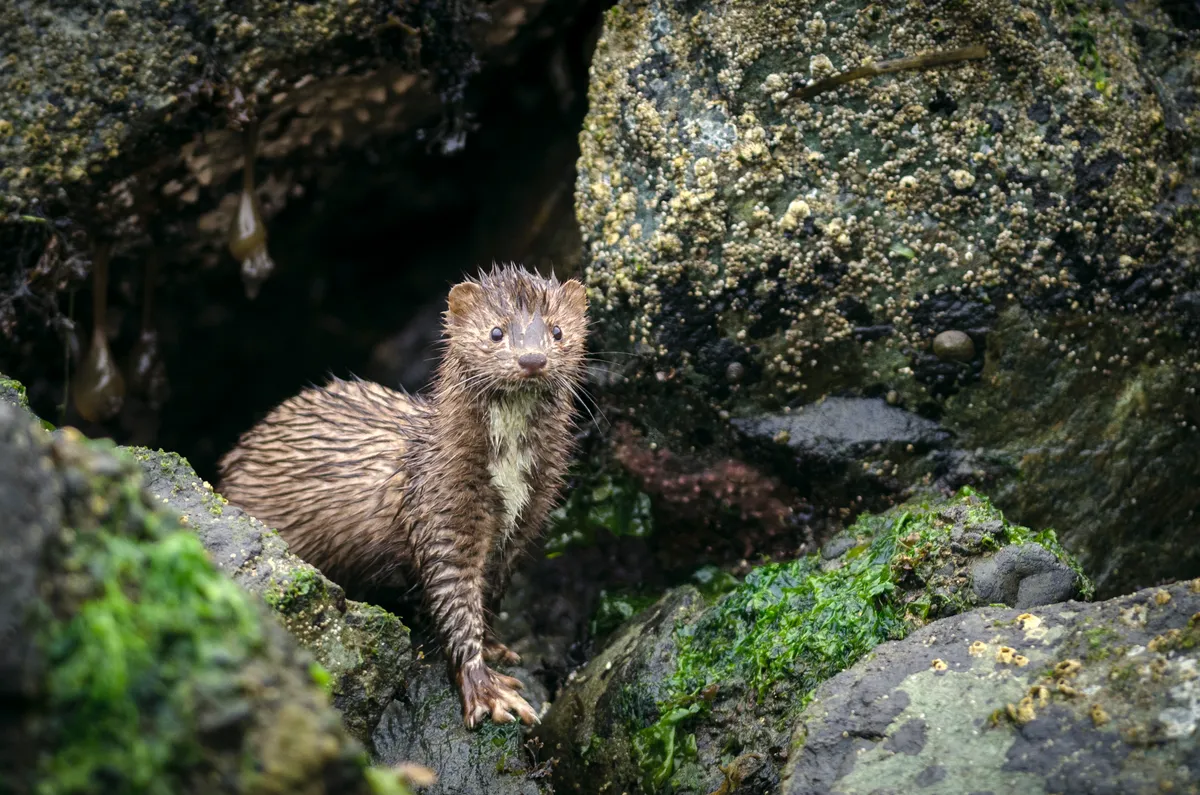American mink have spread rapidly across Britain since they first escaped from fur farms 50 years ago. Now firmly established along rivers and lakes, these newcomers can be mistaken for otters, since both are long and slender with short legs and long tails.
So how do you tell them apart? Mammal expert Pat Morris explains the key identification features and behaviours to look out for:
FACTFILE: EURASIAN OTTER
Scientific name: Lutra lutra (this scientific name is an example of a tautonym, where the genus and specific name are the same)
Nose: Otters have rounded noses
Markings: Throat and chin brownish white
Colour: Usually pale brown
Tail: Otter tails are thick and tapering with short hairs
Size: Adult otters are distinctly bigger than a cat

What can I look for in water? A swimming otter is mostly submerged and creates a broad, U-shaped wave on the surface with its nose.
What can I look for on land? Otters leave prominently placed droppings known as spraint on regular territory-marking spots, such as waterside logs and rocks. Otter spraints are messy smudges with a distinct, not unpleasant smell (a heady mix of fish, jasmine and musk), and contain bones and fish scale remains.
Tracks are usually at least 2cm wide (wider than your thumbprint).

Habitat: Otters can be found beside rivers, streams and lakes, mostly in north and west England and Wales. Also found along the west coast of Scotland. Shy and mainly nocturnal, though coastal otters can be seen during the day.
FACTFILE: MINK

Scientific name: Mustela vison
Nose: Mink have pointed noses
Markings: Sometimes has a pure white spot under the chin
Colour: Usually very dark, almost black
Tail: Mink tails are almost bushy when dry
Size: Mink are about the same size as ferrets, which makes them significantly smaller than otters, with a length of 30-45cm and a tail of 15-25cm on top. The greatest difference is in their bulk, as the largest male mink only weigh a little over 1.5kg, while otters average 7-12kg and can be even heavier.

What can I look for in water? A mink swims higher out of the water than an otter, so the whole length of its back is often visible. It creates a narrow, V-shape wave on the surface with its nose.
What can I look for on land? Mink deposit scats in similar locations to otters. They are 3cm long, black, smell distinctly nasty and contain fur, feathers and bones. Their tracks are barely 1cm wide (narrower than your thumbprint).
Habitat: Mink are found beside rivers, streams and lakes over most of lowland England and Wales. They can also be found along areas of the Scottish coast. Mink are bolder than otters and can be seen day and night.
